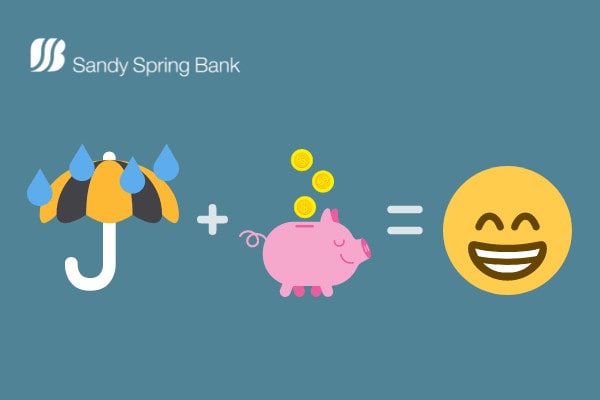
Your mother probably always warned you to be careful not because you were reckless, but because you just never know what life will throw at you. It may have taken a few decades to appreciate those concerns, but as an adult you realize how right she was. Whether it's an unexpected car repair, a medical emergency or the loss of a job, these are possibilities for everyone but not everyone will be prepared for them. That's why it isn't just nice, it is essential to have a backup plan in the form of an emergency fund to help see you through potential hard times.
The easiest way to prepare a rainy day fund is by saving a certain percentage of your paycheck over time. We also recognize that you may need or want a rainy day fund in place in the short term. Good news, the best practices we are sharing today can be adapted to both short and long term strategies. We also recommend meeting with a financial planner who can help you better understand your finances and how to best prepare for the future.
How to begin
Believe it or not, this is toughest part of changing the way you approach your money. It can be daunting at times but with some goals in mind and best practices in place you’ll soon be saving your way towards success.
Typically, an emergency fund should cover at least 3-6 months worth of expenses. Now stop and think about this for a minute because when we say six months of expenses, we mean everything. That’s the obvious ones like rent/mortgage, groceries, car payments and so on. But it’s also other items like cable, internet, phone, insurance and any scheduled expense you currently have in place. We suggest mapping out every monthly expense you currently have and start to build out your financial goals that way. Also keep in mind that there may be extra expenses you don’t have now. For example, if you lose a job and are in an extended unemployment situation you may want to purchase health care. The unforeseen is just that, so adding in a buffer is never a bad thing.
Most people can trim their spending almost immediately. Ask yourself what the truly necessary expenses are in your life and get rid of anything you don’t need. Fancy coffee drinks, eating out daily and even the yearly vacation are all easy targets to hit when you’re first trimming the budget. Once you start looking for ways to save you’ll suddenly start seeing them everywhere- an avalanche of savings opportunities. Be sure to capture this extra money though and divert it to your rainy day fund in a way that maximizes its worth.
Making your money work for you
Not just secure though, your money should always be accessible since unpredictable events tend to be somewhat unpredictable. You don’t want them in a financial vehicle that penalizes withdrawals. Your money should also be working for you and Sandy Spring Bank has a range of FDIC insured solutions from savings and Money Market accounts to Certificates of Deposit and IRAs that can help you achieve your savings goals.
Specifically, Money Market accounts can help reach your savings goals, while providing safety, liquidity, and a competitive rate of return. With easy access you to your money, FDIC insurance, and the variable market interest rates, these accounts are often a smart savings choice.
Never stop
You’ll find that by making a few simple changes your savings will start to add up and before you know it you’ll have a comfortable emergency fund that you’ll hopefully never have to use. For many people this is how they actually begin the process of planning for retirement. Leveraging the capabilities of a 401(k), and with some planning, you’ll be well positioned not only for an unforeseen life event, but for creating the best retirement possible. Whether you’re just starting out on your savings journey or a seasoned pro, it’s always a good time to sit down with your banker to determine the best options for you. Your banker can put together a plan specific to you and your goals and help minimize any impact from a downturn in the economy or something else entirely.
Contact us today at 800.399.5919 or visit a Sandy Spring Bank branch near you to discuss your banking needs.
This publication does not constitute legal, accounting or other professional advice. Although it is intended to be accurate, neither the publisher nor any other party assumes liability for loss or damage due to reliance on this material.